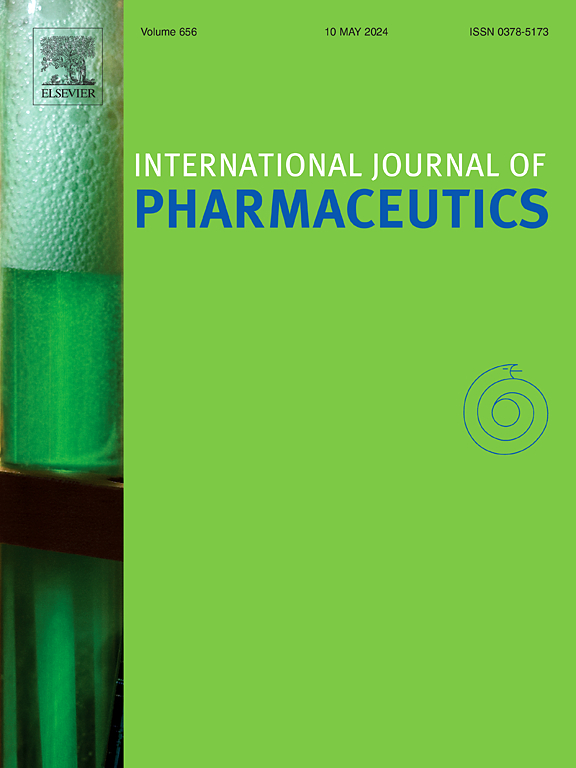Deposition simulations of realistic dosages in patient-specific airways with two- and four-way coupling
IF 5.3
2区 医学
Q1 PHARMACOLOGY & PHARMACY
引用次数: 0
Abstract
Inhalers spray over 100 million drug particles into the mouth, where a significant portion of the drug may deposit. Understanding how the complex interplay between particle and solid phases influence deposition is crucial for optimising treatments. Existing modelling studies neglect any effect of particle momentum on the fluid (one-way coupling), which may cause poor prediction of forces acting on particles. In this study, we simulate a realistic number of particles (up to 160 million) in a patient-specific geometry. We study the effect of momentum transfer from particles to the fluid (two-way coupling) and particle–particle interactions (four-way coupling) on deposition. We also explore the effect of tracking groups of particles (‘parcels’) to lower computational cost. Upper airway deposition fraction increased from 0.33 (one-way coupled) to 0.87 with two-way coupling and particle diameter. Four-way coupling lowers upper airway deposition by approximately 10% at dosages. We use parcel modelling to study deposition of particles, observing significant influence of two-way coupling in each simulation. These results show that future studies should model realistic dosages for accurate prediction of deposition which may inform clinical decision-making.

实际剂量的沉积模拟在病人特定的气道与二和四向耦合。
吸入器将超过1亿个药物颗粒喷射到口腔中,其中很大一部分药物可能会沉积在口腔中。了解颗粒和固相之间复杂的相互作用如何影响沉积对于优化处理至关重要。现有的模型研究忽略了粒子动量对流体的任何影响(单向耦合),这可能导致对作用在粒子上的力的预测不佳。在这项研究中,我们在一个病人特定的几何形状中模拟了真实数量的粒子(高达1.6亿)。我们研究了从粒子到流体的动量传递(双向耦合)和粒子-粒子相互作用(四向耦合)对沉积的影响。我们还探讨了跟踪粒子群(“包裹”)的效果,以降低计算成本。上气道沉积分数从0.33(单向耦合)增加到0.87(双向耦合,颗粒直径为10µm)。在100µg剂量下,四向耦合可使上呼吸道沉积降低约10%。我们使用包裹模型来研究4-20µm颗粒的沉积,在每个模拟中观察到双向耦合的显著影响。这些结果表明,未来的研究应该模拟真实的剂量,以准确预测沉积,从而为临床决策提供信息。
本文章由计算机程序翻译,如有差异,请以英文原文为准。
求助全文
约1分钟内获得全文
求助全文
来源期刊
CiteScore
10.70
自引率
8.60%
发文量
951
审稿时长
72 days
期刊介绍:
The International Journal of Pharmaceutics is the third most cited journal in the "Pharmacy & Pharmacology" category out of 366 journals, being the true home for pharmaceutical scientists concerned with the physical, chemical and biological properties of devices and delivery systems for drugs, vaccines and biologicals, including their design, manufacture and evaluation. This includes evaluation of the properties of drugs, excipients such as surfactants and polymers and novel materials. The journal has special sections on pharmaceutical nanotechnology and personalized medicines, and publishes research papers, reviews, commentaries and letters to the editor as well as special issues.

 求助内容:
求助内容: 应助结果提醒方式:
应助结果提醒方式:


